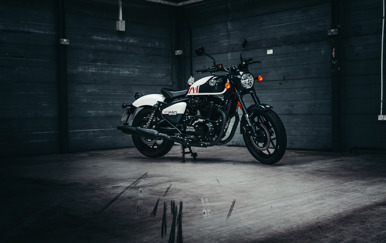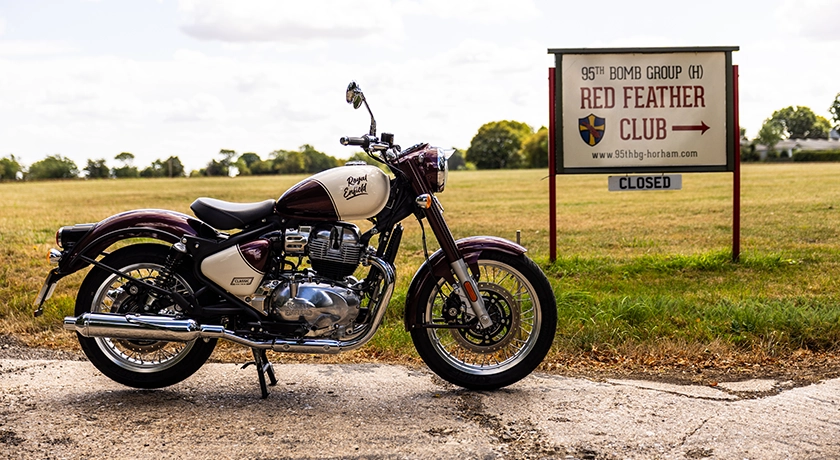
Following on from the popular little Classic 350 launched in 2022, this new 650 variant utilises the company's proven 650cc parallel twin, taking inspiration from the original 500 twin of the 50s… It’s priced from £6,499, but is it any good?
Royal Enfield 650 Looks & Styling | Classic Appeal
Based on the outgoing Super Meteor and Shotgun platform, the Classic leans more toward Royal Enfield’s original styling, taking inspiration from models of the 1950s, specifically, the original 500, which was Royal Enfield’s very first twin, having been released in 1949, and I think they’ve done a great job on this new 650; it really looks the part.
It seems like Royal Enfield has left no stone unturned on the Classic, as everything either looks or feels genuinely classic. The polished engine cases are a work of art and could easily be mistaken for a NOS (new old stock) part off a shelf of unused 1950s parts, and that’s not even mentioning how good the spoked wheels look.
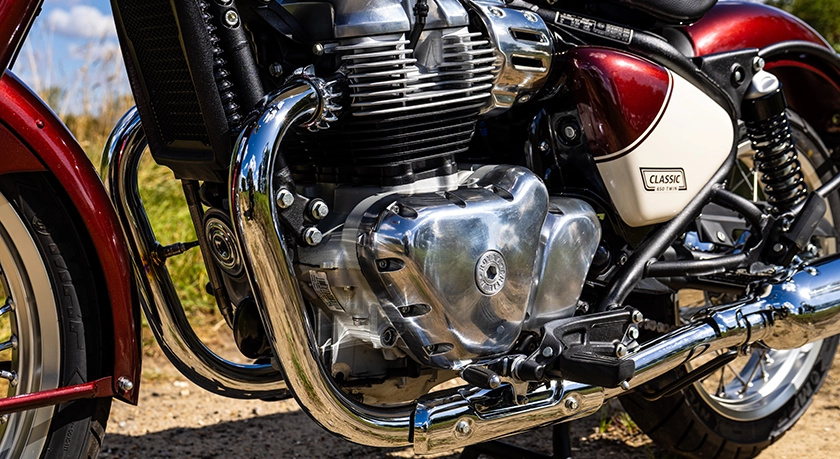
It comes in three colourways: Black Chrome, Teal & the one we have for review, Vallam Red, but if you’re after that true classic style, the black chrome might be the pick of the bunch for me. I particularly love the gold details on that one.
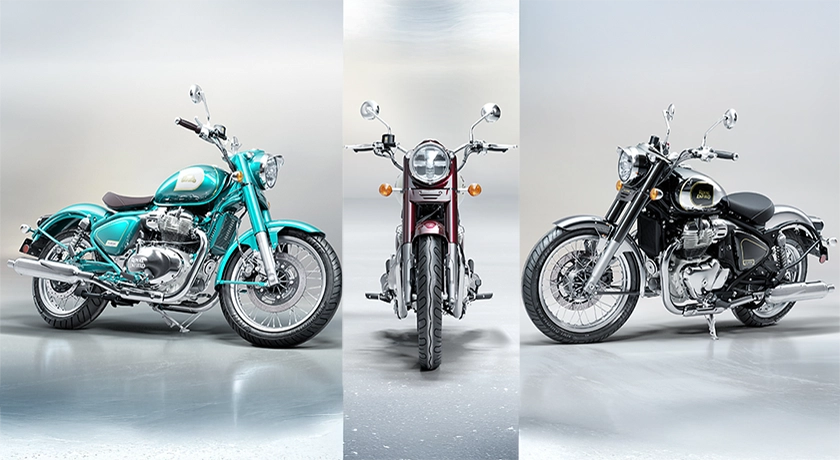
2025 Royal Enfield Engine & Fuel Economy | 650 Parallel Twin
Powering the Classic is RE’s proven parallel twin, but this time, retuned for a more relaxed pace. It was first seen in the Interceptor launched in 2018, and not only looks fantastic with the polished engine cases, which I already mentioned, but sounds great too with that 270-degree crankshaft. A personal favourite configuration of mine, I must say.
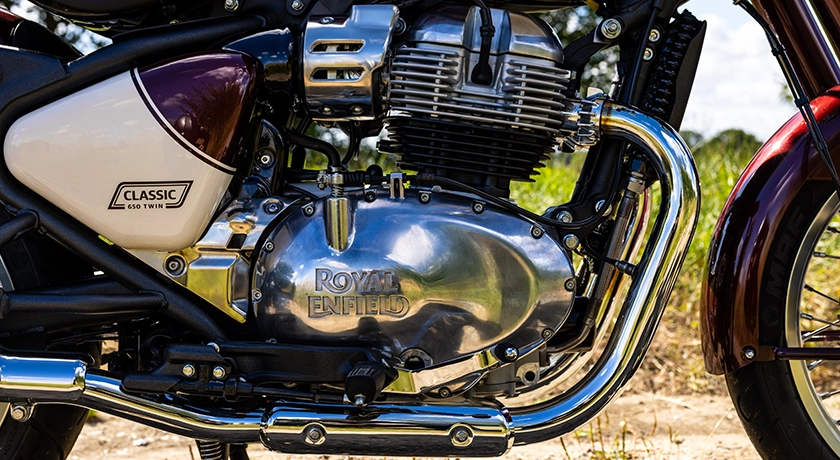
As per the other 650s in Enfield’s increasing lineup, it’s an air/oil-cooled 648cc unit which makes just over 46hp and a little over 52nm of torque, healthy numbers and numbers which also make this A2 compliant straight out of the box.
What I liked about this engine is that it’s calm and torquey at low revs without needing much input to get about, thanks to the torque, but if you want to push on, it almost transforms into a different bike when you do rev it out and the power starts to kick in.
It’s never going to be fast with the power figures we have, but the power is incredibly usable and versatile with a smooth, linear delivery.
It’s also reasonably fuel efficient, managing to achieve in the region of 60mpg. Pair that to its 14.8L fuel tank (which looks fantastic, I may add), and you’ll see around 170 miles on a tank of fuel, not bad going for a hefty bike.
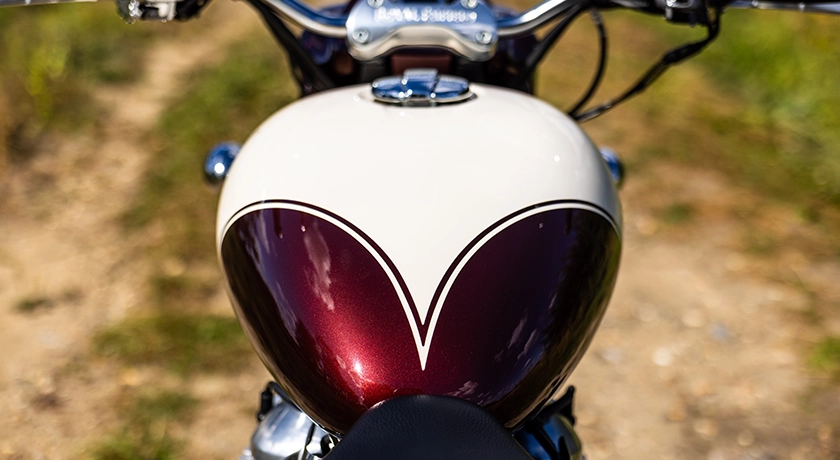
Classic 650 Weight & Seat Height | Looks great, but it’s heavy…
One of the biggest downsides to this bike for me is its weight. It somehow tips the scales at 243kg, which, when you take into account its sub 50hp power figures, it soon becomes a lot of mass to push along, leaving the Classic with a less-than-desirable 189hp per tonne power-to-weight ratio. It starts to make a bit of sense when you consider nearly everything is made of metal on this bike, but still, 243kg…
The upside of this weight is that it’s low down, so I didn’t tend to notice it much except for when moving the bike about manually and even then, it wasn’t an issue, just noticeable, especially for a 650.
The seat is also a reasonable and fairly standard 800mm high, so whilst it’s heavy, you can generally keep both feet down on either side for a bit more control slow manoeuvring or stopped in traffic.
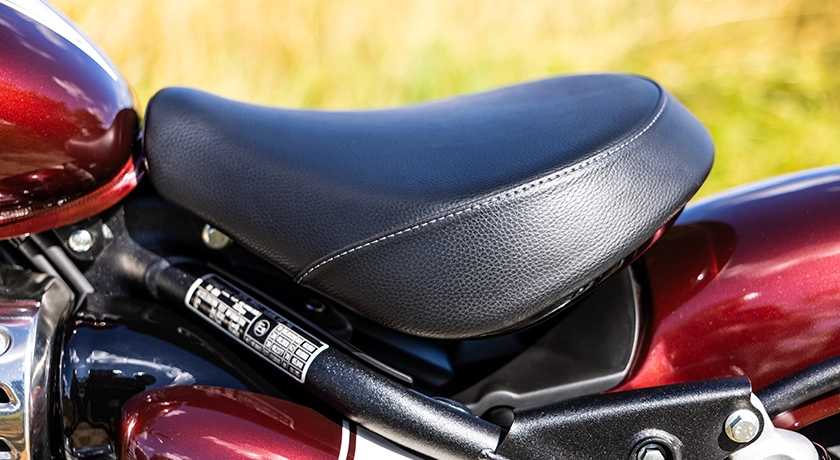
How is the handling on the Classic 650?
The other upside of this mass is that it’s supported by Showa suspension front and rear with 43mm telescopic forks and twin rear shocks, which provide supple damping, managing to hide the weight well and making the 650 a very relaxed place to be bimbling around the countryside.
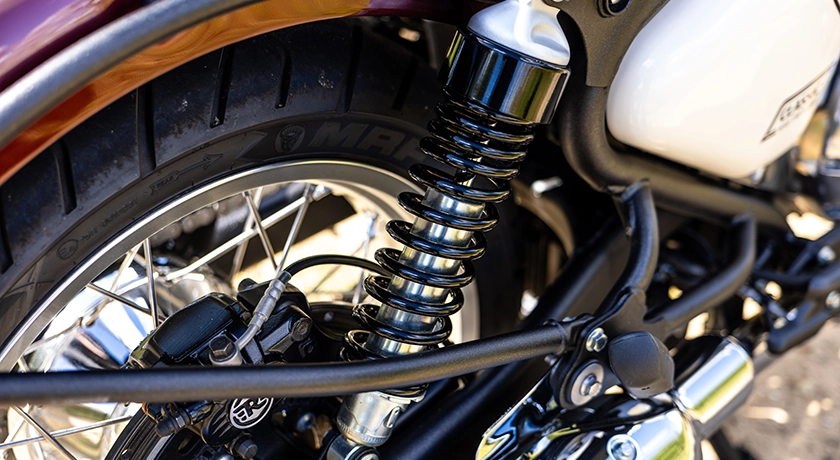
It has the stopping power for its weight, too, thanks to a twin-piston floating caliper and 320mm disc at the front paired with a standard single-piston caliper and 300mm disc at the rear. For the relaxed nature of this bike, this was ample and provided adequate stopping power, especially when combined with its ABS.
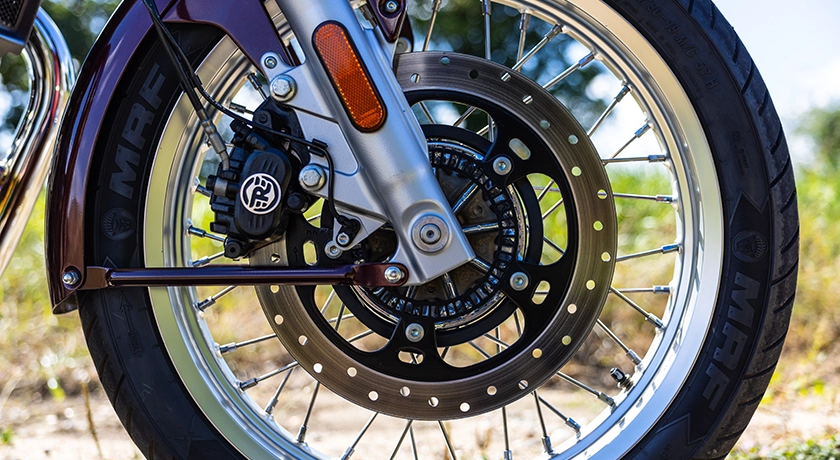
Adding to its relaxed nature are its spoked wheels, creating a degree of flex over an alloy wheel, especially when paired with a 19-inch front and 18-inch rear wheel, which adds stability.
On the subject of comfort, however, I did surprisingly find the footpegs very vibey at motorway/dual carriageway speeds, which somewhat takes out its long-distance touring capabilities in my opinion.
2025 Royal Enfield Classic 650 Equipment
The attention to detail on the Classic is one of the best overall features, in my opinion, especially with the classic style rotary switchgear. The dash layout is also no exception, being modelled directly after the original 500 twin.
We get a split analogue/LCD main display, ignition barrel on the left and the Tripper navigation pod on the right. Whilst the split analogue/LCD display is mostly in keeping with classic styling in terms of looks, I’m unsure where an eco-display with a shift indicator fits in.
Especially with the Tripper’ navigation pod which albeit, is nicely placed, but still feels out of place on what is a classic styled bike and makes the overall riding experience feel very modern when so much effort has gone into making it feel classic elsewhere.
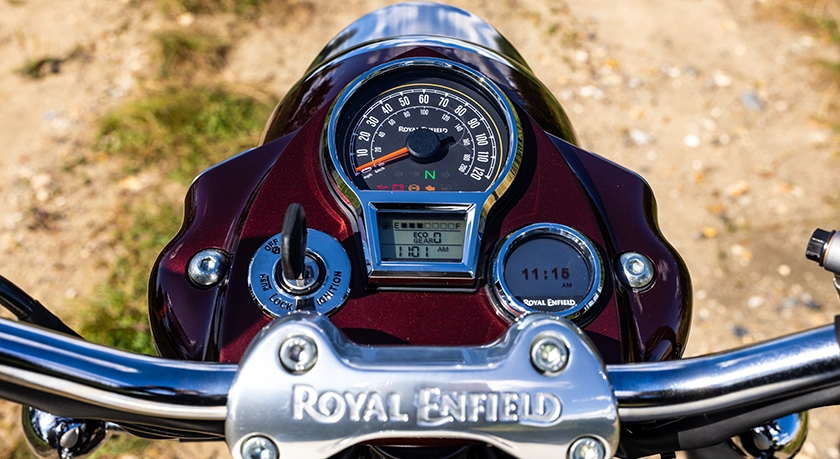
I understand these placements as it’s obviously 2025 and tech has to be somewhere on a bike nowadays, but I feel this would have been better left to the Shotgun or Super Meteor, or at least, incorporated a bit more subtly into the dash layout. As I covered in the review of the Guerrilla 450, I’m not the biggest fan of the Tripper Pod anyway. I appreciate the integration of Google Maps for quick routing and rerouting, but the overall user interface leaves something to be desired, without even mentioning the limited functionality.
The Classic 650 Lighting Setup
As with everything else on the Classic 650, the lighting is also equally attentive to detail, with chrome housings.
Naturally, it has an LED tail with a white LED headlight and being honest, I think a warmer LED light or even halogen would have looked the part to fit into the whole classic appearance, but nonetheless, we still have halogen indicators.
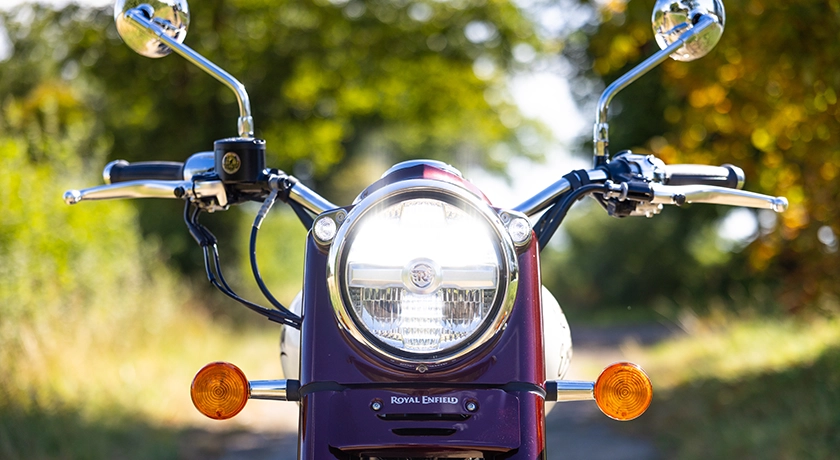
Going back to the dash, I feel like Royal Enfield has made a brilliant bike, one that really does hark back to the original models of the 50s, but with the Tripper pod, eco riding indicator, gear change indicator and bright white LED lighting, a bit more effort could have been made to make it that little bit more Classic (as the name would suggest) and really make it stand out in the market of modern classics all while naturally making it cheaper to buy and manufacture, too.

BSA Gold Star 650
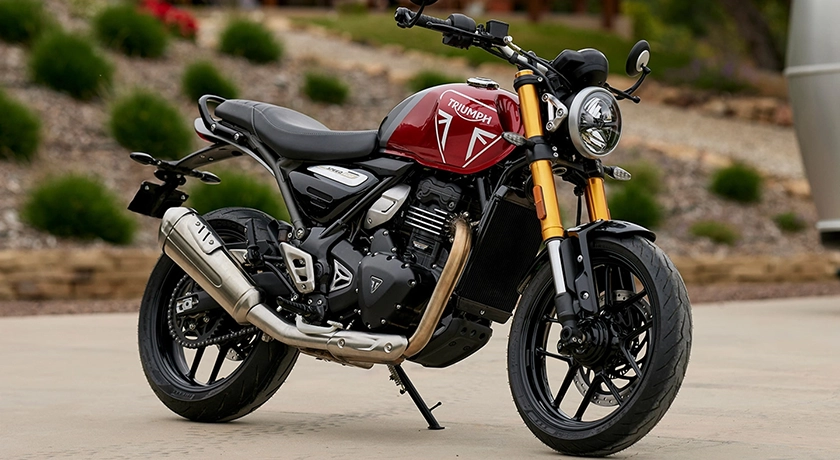
Now, if you are already favouring the Classic 650 but aren’t 100% sure it’s for you, then the BSA Gold Star 650 and Triumph Speed 400 might be worthy alternatives.
The BSA has the same capacity engine as the Classic, although it is a single-cylinder thumper versus the parallel twin of the Enfield. It also has a slightly lower power output of 45hp, but it does have a slightly higher torque output of 55nm which comes in sooner on the rev range, too.
You’ll also find a smaller fuel tank and only a 5-speed gearbox instead of a 6-speed, but this is made up for when you consider it’s 30kg lighter than the classic, coming in at 213kg. It also has a lower seat height and a smart twin analogue dash.
If this sounds like something for you, then it also comes with a final bonus of being £100 cheaper at £6,399.
Alternatively, the Triumph Speed 400 is another option. Again, like the BSA, it is a single cylinder versus a parallel twin, and it’s also 400cc instead of 650, but surprisingly, it isn’t too down on power at 39.5hp. Torque does take a hit, however, as it only comes with 37.5nm versus the 52nm seen on the Classic.
If the 243kg weight of the Classic sounds a bit much for you, though, then the Speed 400 may sound more appealing with a weight of just 170kg. It also comes in at a massive £1,150 cheaper at £5,345, whilst carrying that famous Triumph name on the tank.
Final Thoughts on the 2025 Royal Enfield Classic 650
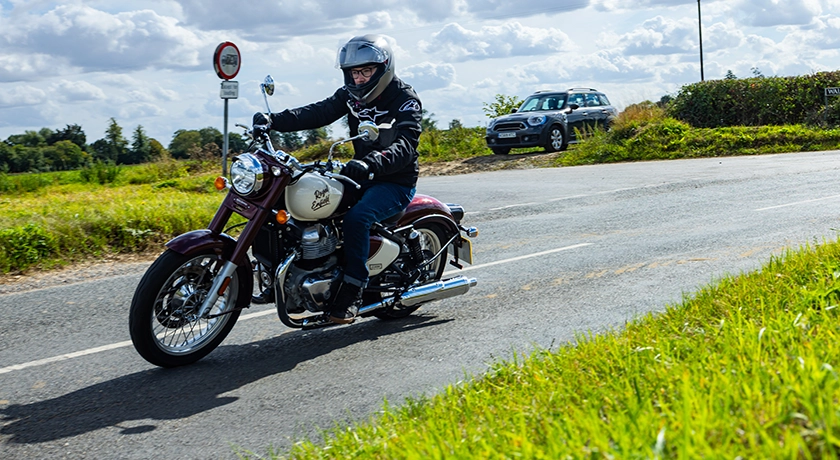
Overall, for the price, the Classic 650 is hard to beat. Yes, it has some downfalls, like the vibration at higher speeds and unusual tech additions, but aside from that, I particularly loved the versatility of the engine with the low-end torque and higher-end power, allowing for a range of riding styles.
The overall geometry, riding position and seat are super comfy, making the Classic a very relaxed place to be; it’s not the style of bike to be in a rush, but instead to enjoy the scenery, and for that, it does its job very well and makes me think that this bike is more suited to the Sunday rider.
I say this as the bike is more of a relaxed ride, one you’d want to keep nice and shiny and on top of that, I don’t quite know how well the engine cases and chrome finishes would put up with the salty winter roads we get here in the UK if you were to use it as a commuter, being honest.
I liked the attention to detail; it feels like Royal Enfield has really put some thought into the small details and not just the overall bike, and it doesn’t feel too dissimilar to my Bonneville T100 I used to have, except this is six and a half grand new.
If you want a bike that takes more of a relaxed pace and replicates some of the joys of an actual classic, then this Royal Enfield could be for you.
The Last Stop!
If you’ve enjoyed reading this review and feel tempted by the classic appeal, or even if you have your own motorcycle already and need insurance, head to Lexham to get your motorcycle insurance quote direct!





